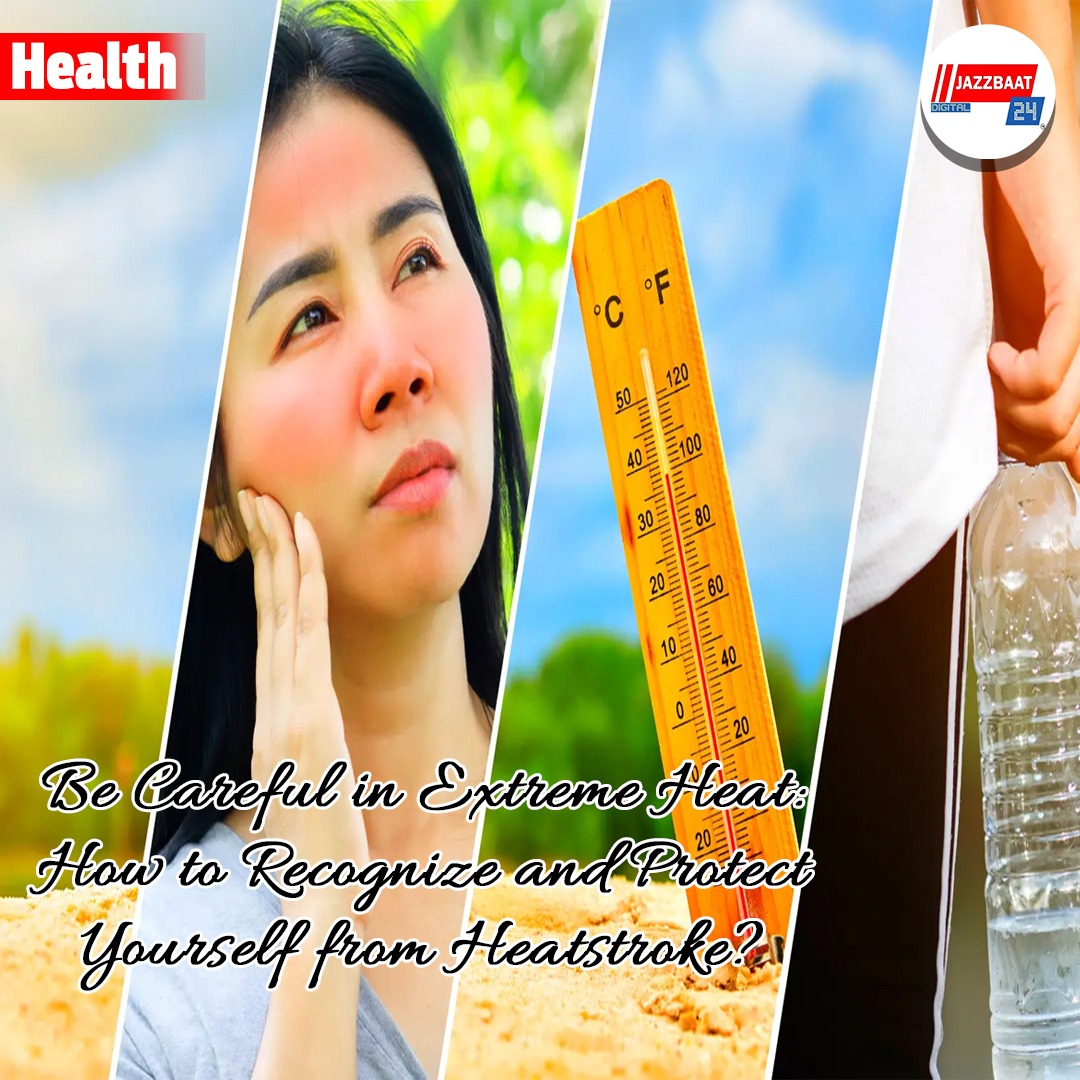
The temperature of the sun in summer keeps rising little by little. When the weather exceeds the tolerance limit, stress is created on the body and mind. For those who spend a lot of time on the road, in the office, on the train or outside the house, this harshness of the heat can be not only uncomfortable, but also life-threatening. This is when a terrible condition occurs - heatstroke.
Heatstroke is a condition when the body's ability to control temperature fails. Normally, the body reduces the temperature by sweating. But when sweat does not come out of the body, the internal temperature continues to rise. When the temperature reaches 104 degrees Fahrenheit (40 degrees Celsius) or more, it can become dangerous. If immediate action is not taken, damage to the brain, heart, kidneys and even death can occur.
How do you know that heatstroke is happening?
The symptoms of heatstroke usually do not start gradually - the body suddenly starts giving danger signals. At first, you may feel a little weak, dizzy or tired. But ignoring these minor symptoms can be a serious danger. Below are some common signs of heatstroke—
• Sudden dizziness, loss of balance
• Severe weakness, loss of walking ability
• The body becomes very hot, but does not sweat
• Dry and red skin
• Nausea or actually vomiting
• Difficulty breathing
• Very fast or irregular heartbeat
• Slurred or slurred speech
• Fainting
In many cases, heat exhaustion occurs before heatstroke—that is, the body becomes very tired, but still sweats. This can be a precursor to heatstroke. Therefore, it is necessary to take action while there is still time.
What to do to avoid this situation?
The biggest way to avoid heatstroke is to be careful in advance. By making some changes in your lifestyle little by little, you can protect yourself from many major dangers.
1. Drink plenty of water
In the heat, water is quickly lost from the body. So you should drink at least 8 to 10 glasses of water a day. Even if you are not thirsty, you should force yourself to drink water. Those who work hard or go out in the sun need to drink more water. Not only water, but also sherbet made of lemon, salt and sugar, ORS or coconut water are also very beneficial.
2. Stay away from the sun
On a hot day, the sun is most dangerous from 11 am to 4 pm. It is better not to go out during this time. If there is an urgent need, use an umbrella, wear light-colored loose cotton clothes and use sunglasses on your eyes. Wearing a cloth or hat on your head blocks the heat of the sun to some extent.
3. Keep your body cool
If you are at home, keep the room cool, use a fan, cooler or AC if necessary. Wash your face, hands and feet with cold water several times a day. Repeatedly wiping your body with a cold wet cloth reduces the temperature.
Those who sweat less have a higher body temperature. Such people need to be more careful, because they are more likely to get heatstroke.
4. Control the time of rest and exercise
It is better not to put excessive pressure on the body during summer. You can do light exercise in the morning or evening, but it is better to avoid walking, running, and playing sports when the sun is shining or in the heat. Take breaks between work. It is very important to get enough sleep.
5. Keep yourself light in food
Eating heavy, oily, and spicy food in summer puts pressure on the body. So, keep more vegetables, fruits, coconut water, and lemon juice in your diet. Eat more foods that keep the body cool, such as watermelon, cucumber, yogurt, and radish.
6. Keep extra watch on the elderly, children, and the sick
Young children, the elderly, and those with diabetes, heart problems, or high blood pressure are at higher risk of heatstroke. They should be given regular water, kept in a cool environment, and kept out of the sun as much as possible.
What to do if you have heatstroke?
If you suspect someone is having heatstroke, take the following steps immediately—
First, take the patient to a cool, shaded place
Remove their clothes so that the body can cool down
Sprinkle cold water on the neck, armpits, forehead, and face
Wipe the entire body with a wet cloth
If you want, you can run a fan or use ice
If they are conscious, give them ORS, water, or syrup
If the condition worsens, take them to the hospital quickly
Lastly, heatstroke can be life-threatening, but it can be completely avoided if you are careful in advance. Many of us think, “Nothing will happen to me,” and this confidence sometimes becomes a cause of danger. So, with a little caution, some small habits, and giving your body time to rest, you can stay safe from the scorching summer sun.
Keep an eye not only on yourself, but also on the people around you, especially the elderly and children. It is also our responsibility to make each other aware. No matter how terrible the heat is, a little care can conquer it.